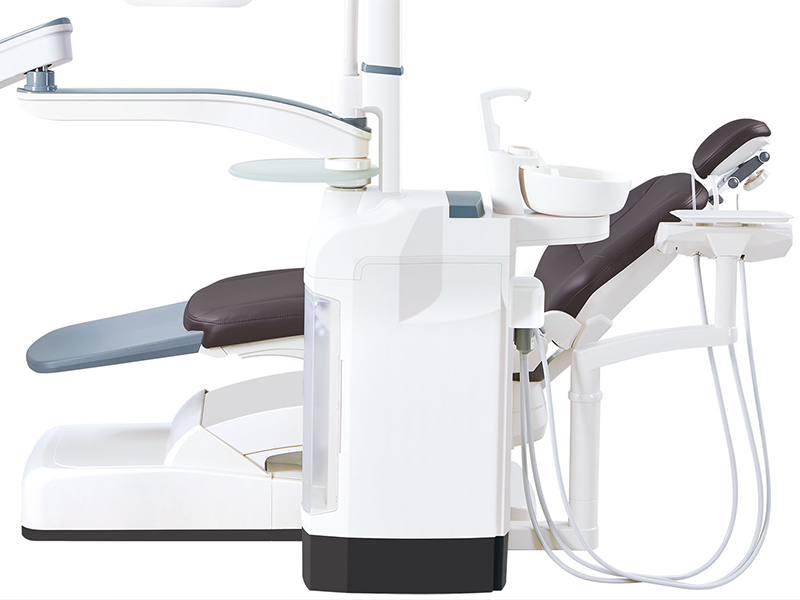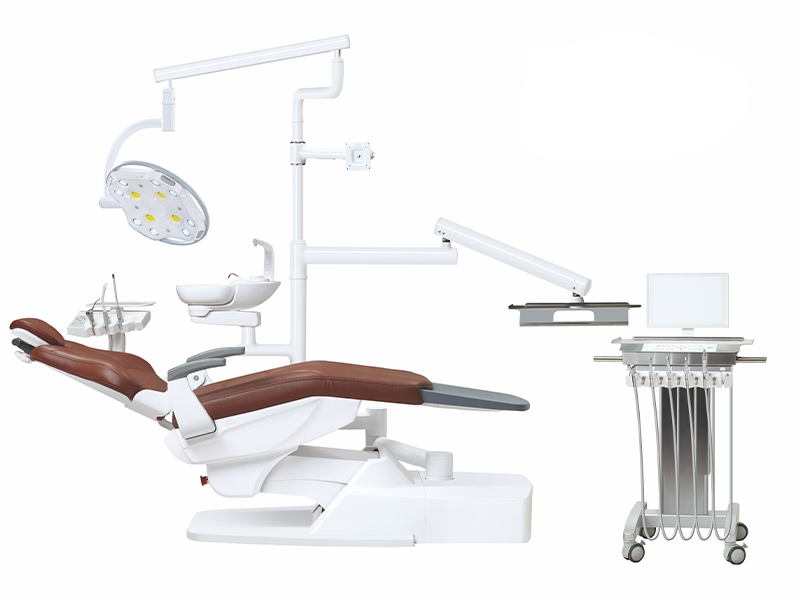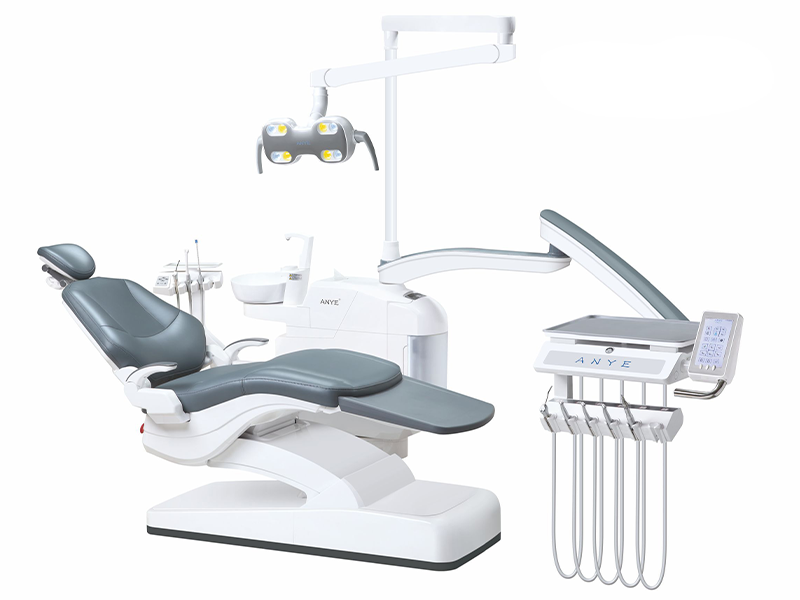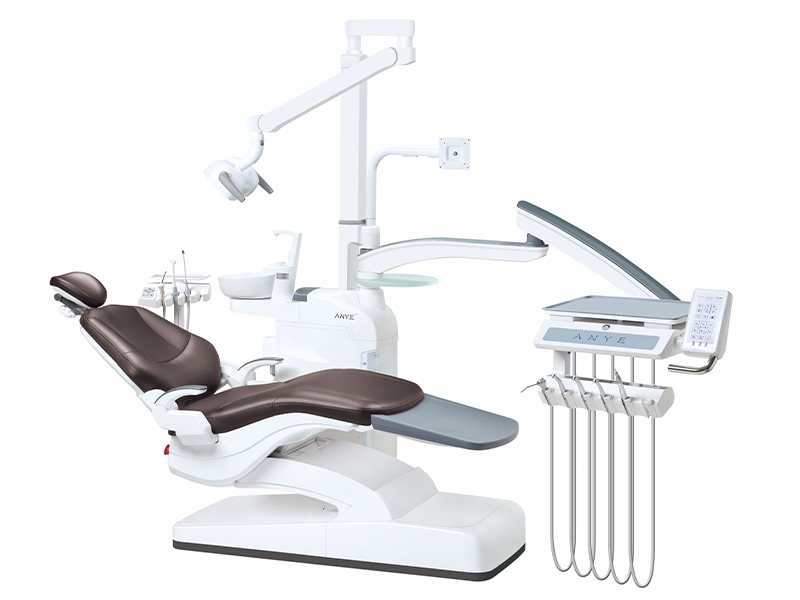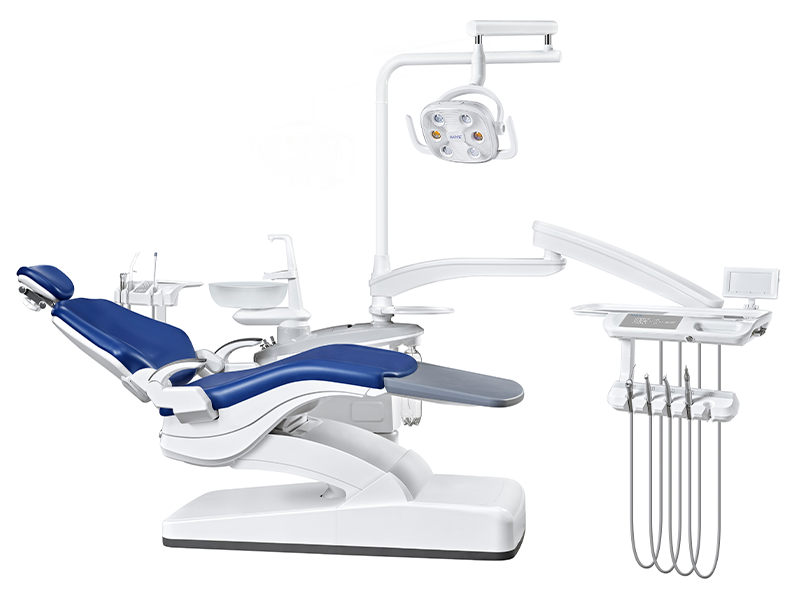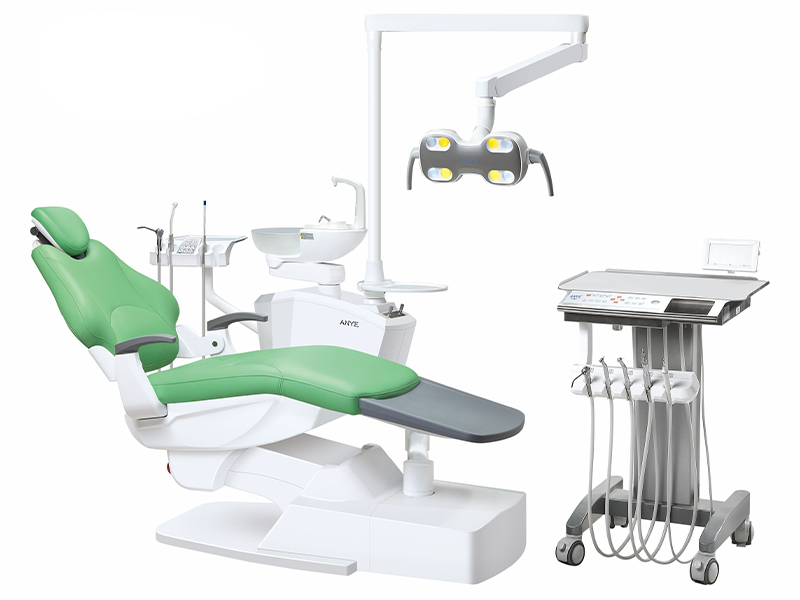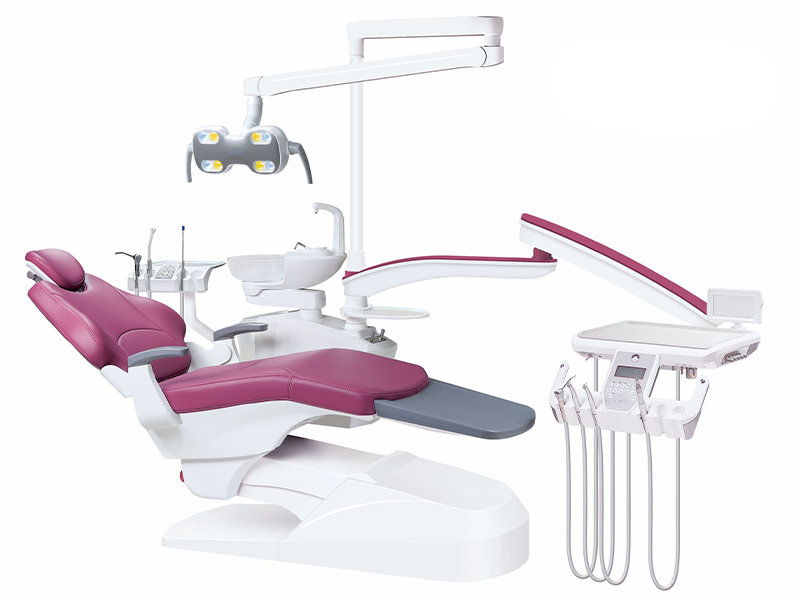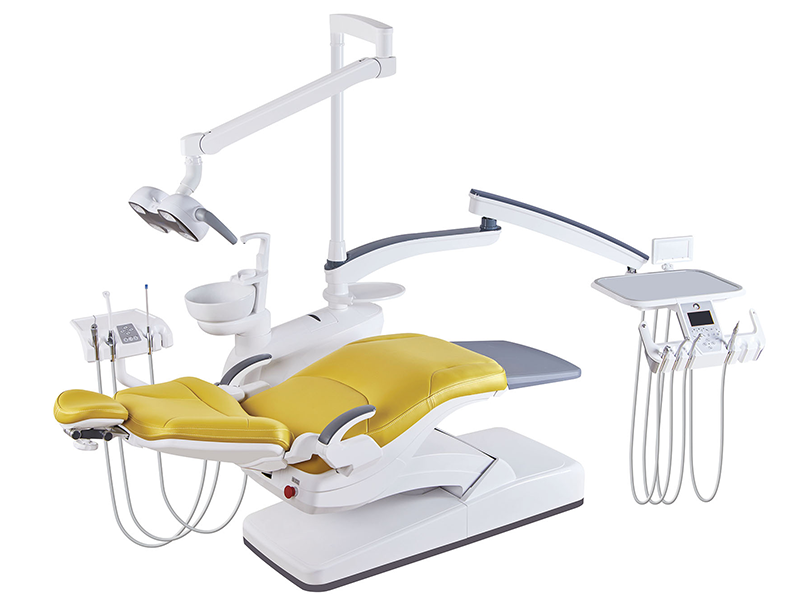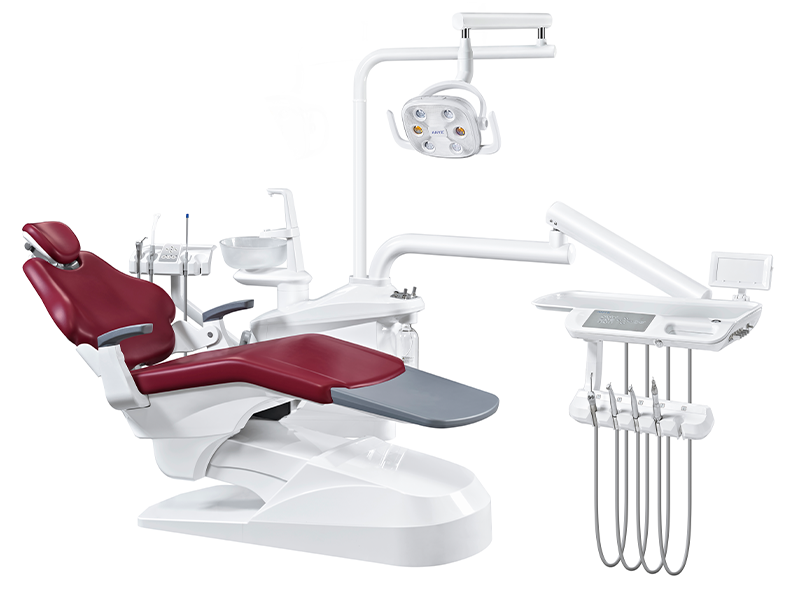Are you looking to enhance your dental practice’s efficiency and patient comfort? Dental chair control boxes are the unsung heroes of modern dentistry, acting as the central hub for seamless operation and precision. At Anye Dental, we understand the importance of reliable equipment, which is why our guide dives deep into the features and functions of these essential components. Did you know that 85% of dental professionals prioritize advanced control systems to improve patient care?
In this article, you’ll discover how dental chair control boxes streamline procedures, ensure safety, and elevate the overall patient experience. We’ll explore their key features, from intuitive interfaces to customizable settings, and explain how they integrate seamlessly with Anye Dental’s innovative units, like the AY-215A1 and AY-215B2. Whether you’re upgrading your practice or starting fresh, this guide will help you make informed decisions.
Ready to transform your dental practice? Keep reading to unlock the full potential of dental chair control boxes and see how Anye Dental can support your journey toward excellence.
Understanding Dental Chair Control Boxes
What is a Dental Chair Control Box?
A dental chair control box is the central hub that manages the electrical, mechanical, and electronic operations of a dental chair. It acts as the command center, coordinating essential functions like chair positioning, lighting adjustments, and the operation of integrated dental tools. This vital component ensures smooth and efficient chair performance, enabling dental professionals to concentrate on delivering exceptional patient care without disruptions. For example, Anye Dental’s control boxes are designed to integrate seamlessly with advanced dental units like the AY-215A1 Implant Dental Unit, ensuring reliability and precision.
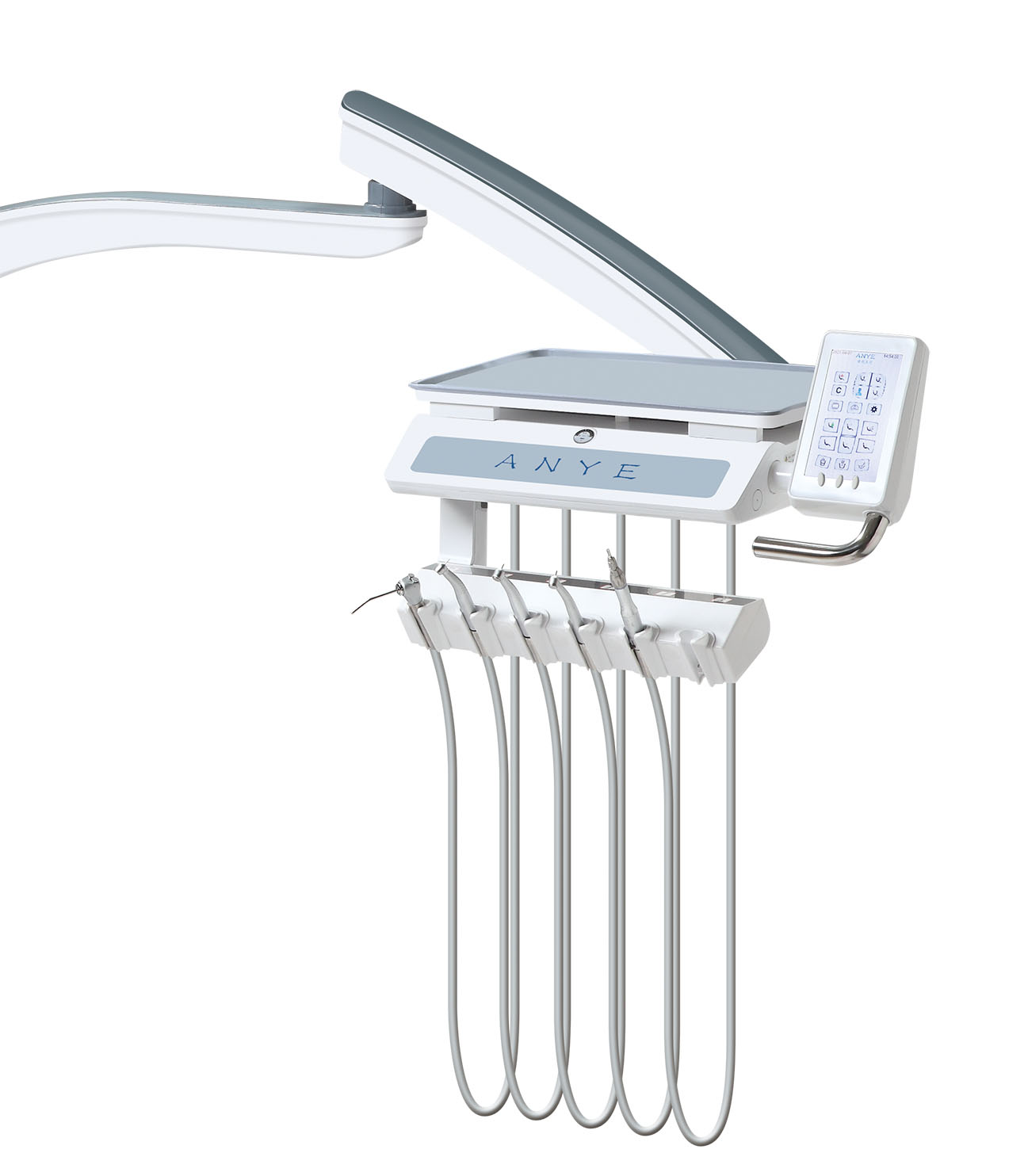
The Evolution of Dental Chair Control Box Technology
The development of dental chair control boxes has seen a remarkable transformation, evolving from basic manual systems to advanced electronic solutions. Modern control boxes now feature state-of-the-art technologies that enhance precision, usability, and integration within dental practices. Key advancements include:
- Microprocessor-Based Systems: Enable precise control and customizable settings for tailored patient care.
- Touch-Screen Interfaces: Provide user-friendly operation, reducing the learning curve for dental staff.
- Wireless Connectivity: Seamlessly integrates with practice management software for streamlined workflows.
These innovations have significantly improved the functionality of dental chairs, making treatments more efficient and comfortable for both patients and practitioners. Anye Dental’s AY-215C5 Implant Dental Unit exemplifies these advancements with its cutting-edge control box technology.
Key Features of Advanced Dental Chair Control Boxes
Advanced dental chair control systems are revolutionizing modern dental practices by enhancing functionality, efficiency, and patient comfort. These innovative systems are designed to streamline dental operations and improve the treatment experience for both practitioners and patients. Below, we explore the standout features that make these control systems indispensable in today’s dental clinics.
Multifunctional Control Panels for Enhanced Efficiency
Modern dental chair control systems are equipped with multifunctional panels that simplify dental procedures and improve workflow efficiency.
- Programmable Presets: Dentists can save preferred chair positions, allowing for quick adjustments during treatments. This feature saves time and ensures a seamless patient experience.
- Precision Adjustments: Fine-tuning the chair’s position ensures optimal comfort for patients, catering to individual needs and improving treatment outcomes.
- Integrated Instrument Controls: Advanced systems allow dentists to operate dental tools directly from the control panel, reducing interruptions and enhancing procedural efficiency.
For more details on multifunctional control panels, explore Anye Dental’s Implant Dental Unit AY-215A1.
Ergonomic Design for Improved Usability
The ergonomic design of these control systems ensures ease of use and maximizes operatory space.
- Compact Layouts: Designed to save space, these systems keep the treatment area organized and clutter-free.
- Intuitive Button Placement: Strategically positioned buttons enable quick, eyes-free operation, allowing dentists to focus on the patient.
- Customizable Interfaces: Many systems offer personalized settings, ensuring each practitioner can tailor the controls to their preferences.
Discover how ergonomic design enhances usability with Anye Dental’s Dental Unit AY-215A2.
Advanced Safety Features for Patient and Staff Protection
Safety is a top priority in dental practices, and modern control systems incorporate several fail-safes to ensure secure operations.
- Emergency Stop Function: This feature allows for immediate halting of chair movements in case of emergencies, ensuring patient safety.
- Anti-Collision Technology: Sensors detect obstacles in the chair’s path, preventing accidental impacts and protecting both patients and staff.
- Automatic Position Locking: During procedures, the chair locks in place to prevent unintended movements, ensuring stability and patient security.
Learn more about safety features in Anye Dental’s Dental Unit AY-215A3.
Cutting-Edge Technological Innovations
Beyond basic functionalities, advanced dental chair control systems integrate state-of-the-art technologies to elevate their performance.
-
Touchless and Voice-Activated Controls:
- Gesture-Based Controls: Enable hands-free adjustments, reducing contamination risks and maintaining hygiene.
- Voice Activation: Dentists can adjust settings verbally, minimizing physical contact and enhancing operational efficiency.
-
Integration with Practice Management Software:
- Real-Time Data Logging: Tracks chair usage and maintenance needs, ensuring proactive equipment management.
- Patient Record Connectivity: Links chair functions with patient records, streamlining workflows and improving efficiency.
Explore the latest technological advancements with Anye Dental’s Dental Unit AY-215A5.
Core Functions of Dental Chair Control Boxes
Dental chair control boxes are the central hub of modern dental practices, enabling seamless operation of chair functionalities that improve patient comfort and procedural efficiency. For dental professionals, understanding these features is key to optimizing workflows and delivering superior patient care. Below, we explore the essential functions of dental chair control boxes and how they enhance daily operations in dental clinics.
1. Precision Chair Positioning
Dental chair control boxes allow for exact adjustments to the chair, ensuring optimal positioning for both patients and practitioners. This precision is vital for creating a comfortable and efficient treatment environment.
- Height Adjustment: Effortlessly raise or lower the chair to suit different procedures. This feature reduces physical strain on dentists and enhances ergonomics, ensuring comfortable access during treatments.
- Backrest Angle Control: Adjust the backrest to provide proper spinal support and comfort for patients. This adaptability accommodates various anatomies, improving patient cooperation and comfort.
- Headrest Positioning: Achieve precise alignment for head and neck support, ensuring patient comfort and unobstructed access for dentists during procedures.
2. Integrated Lighting Management
Effective lighting is critical for dental procedures, and control boxes manage advanced lighting systems to enhance visibility and precision.
- Intensity Adjustment: Control the brightness of overhead lights to ensure optimal visibility for detailed work, minimizing errors during intricate procedures.
- Color Temperature Settings: Adjust the light’s color temperature to reduce eye strain and create a comfortable working environment for long procedures.
- Focused Beam Control: Direct light precisely within the oral cavity, improving visibility and accuracy during treatments.
3. Dental Instrument Integration
Modern control boxes integrate seamlessly with dental instruments, streamlining workflows and enhancing efficiency.
- Handpiece Activation and Speed Control: Activate handpieces and adjust their speed based on procedure requirements, allowing dentists to adapt quickly to different tasks.
- Water and Air Supply Management: Regulate water and air flow for cooling instruments and rinsing, ensuring smooth operations and improved patient comfort.
- Ultrasonic Scaler Intensity Adjustment: Precisely control scaler intensity for effective cleaning without damaging surrounding tissues, enhancing treatment safety and efficacy.
4. Memory Functions and User Profiles
Advanced control boxes offer personalized features that improve efficiency and consistency in dental practices.
- Customizable Presets: Save specific chair positions for different procedures, enabling quick adjustments and saving time in busy clinics.
- User-Specific Profiles: Tailor setups to individual practitioner preferences, streamlining workflows and creating a comfortable working environment.
- Procedure-Based Memory Functions: Recall settings from previous treatments to ensure consistent patient care across different practitioners.
5. Additional Features
Beyond core functions, modern dental chair control boxes include innovative features that further enhance their utility.
- Safety Features: Emergency stop functions and anti-collision systems protect patients and staff during operations.
- Touchless Controls: Gesture-based or voice-activated controls enable hands-free operation, improving hygiene and convenience.
- Integration with Practice Management Software: Real-time data logging and streamlined workflows enhance patient record management and equipment maintenance.
Technological Advancements in Control Box Systems
The Evolution of Control Box Systems in Healthcare and Dental Practices
The landscape of control box systems, particularly in healthcare and dental practices, has undergone significant transformation due to cutting-edge innovations. These advancements are designed to elevate user experience, enhance operational efficiency, and prioritize patient comfort. As healthcare providers adapt to evolving demands, these systems have become indispensable tools for improving service delivery and patient satisfaction.
Touchless Controls and Voice Activation: Revolutionizing Hygiene and Convenience
With heightened hygiene concerns, modern control boxes now incorporate advanced touchless controls, ensuring safety and convenience. Key innovations include:
- Gesture-Based Controls: These systems enable users to operate devices without physical contact, maintaining strict hygiene standards. By interpreting hand movements, gesture recognition technology allows seamless command execution.
- Voice-Activated Commands: Users can adjust settings effortlessly through voice commands. Leveraging sophisticated speech recognition, control boxes accurately interpret spoken instructions, making interactions intuitive and efficient.
- Proximity Sensors: These sensors automatically activate functions when a user approaches, minimizing the need for touch. This reliable and adaptable technology ensures consistent performance across various settings.
These touchless features address current health concerns while streamlining operations, allowing healthcare professionals to focus on patient care rather than equipment management.
Integration with Practice Management Software: Enhancing Efficiency
The integration of control box systems with practice management software is now a cornerstone of modern dental practices. This synergy delivers several benefits:
- Real-Time Data Logging: Control boxes monitor chair usage and maintenance needs in real-time, enabling proactive equipment management and reducing unexpected downtimes.
- Patient Record Integration: Linking control systems with patient management software streamlines workflows, providing quick access to patient records during procedures and enhancing the treatment experience.
- Remote Diagnostics: Advanced control boxes support remote diagnostics, allowing technicians to monitor equipment health and perform maintenance checks from afar, ensuring optimal system performance.
These integrations are essential for improving operational workflows and enabling dental practices to deliver high-quality care efficiently.
Enhanced Patient Comfort Features: Elevating the Treatment Experience
Control box systems also play a pivotal role in enhancing patient comfort during procedures. Key features include:
- Massage and Heating Functions: Many modern control boxes manage massage or heating options for dental chairs, helping patients relax during treatments and improving their overall experience.
- Patient Entertainment Systems Integration: Control boxes can connect with entertainment systems, allowing patients to watch movies or listen to music during appointments, alleviating anxiety and making visits more enjoyable.
- Climate Control: Personalized climate settings enable patients to adjust temperature and airflow according to their preferences, creating a comfortable environment tailored to individual needs.
These advancements not only improve the quality of care but also foster a positive atmosphere that encourages patients to return for future visits.
Maintenance and Troubleshooting of Dental Chair Control Boxes
Routine Maintenance Best Practices
Ensuring the longevity and optimal performance of dental chair control systems requires a structured maintenance plan. Here are the essential steps to follow:
- Scheduled Software Updates: Regularly update the software to access the latest features and security patches. This ensures efficient and secure operation of the control systems.
- Cleaning and Disinfection: After each use, clean and disinfect control surfaces with EPA-registered solutions compatible with the chair’s materials to prevent cross-contamination.
- Periodic Calibration: Calibrate positioning and sensor systems regularly to maintain precise movements, which are critical during dental procedures.
- Visual Inspections: Conduct frequent inspections for signs of wear, damage, or malfunction. Encourage staff to report abnormalities promptly to prevent issues from escalating.
- Lubrication: Apply manufacturer-recommended lubricants to movable parts to reduce friction and ensure smooth operation, extending the life of mechanical components.
- Professional Servicing: Schedule annual inspections by certified technicians to thoroughly examine all components, replace worn parts, and maintain peak performance.
By following these practices, dental practices can enhance equipment longevity and ensure a safe environment for both practitioners and patients.
Common Issues and Quick Fixes
Dental chair control systems may encounter several issues over time. Here are common problems and their solutions:
- Unresponsive Controls: Perform a system reset or power cycle the unit to restore functionality quickly.
- Erratic Chair Movement: Recalibrate the system or inspect actuators to ensure proper functionality and patient safety.
- Integration Errors: Update the software or check network connections to resolve integration issues and prevent disruptions.
- Suction Problems: Inspect suction lines for blockages and clean or replace filters to restore proper function.
- Electrical Malfunctions: Address unusual noises or persistent error messages immediately by consulting a qualified technician to avoid safety risks.
Proactively addressing these issues minimizes downtime and maintains a high standard of care.
When to Seek Professional Service
While many issues can be resolved in-house, certain situations require professional intervention:
- Persistent Error Messages: If basic troubleshooting doesn’t resolve error messages, seek professional assistance to prevent further complications.
- Electrical Malfunctions: Unusual noises or visible electrical issues should be assessed immediately by a qualified technician to ensure safety.
- Significant Performance Changes: Sudden changes in chair performance or responsiveness warrant a thorough inspection by a certified service provider.
Understanding when to seek professional help ensures your equipment remains in optimal condition, enhancing patient care and operational efficiency.
Choosing the Right Control Box for Your Practice
Choosing the perfect control box is a pivotal decision that directly impacts your dental practice's efficiency, patient satisfaction, and growth. This guide by Anye Dental, a leader in dental chair solutions, provides actionable insights to help you make an informed decision tailored to your practice's unique needs.
Understanding Your Practice Requirements
Before selecting a control box, it’s essential to assess your practice’s specific needs. Here’s how to identify what matters most:
Patient Volume and Workflow
How many patients do you treat daily? High patient volumes or complex procedures may require a control box with advanced features like programmable presets and ergonomic designs. For example, Anye Dental’s AY-215A1 model offers customizable settings to streamline workflows and reduce wait times.
Integration with Existing Systems
Ensure the control box integrates seamlessly with your current equipment and software. Compatibility minimizes disruptions and enhances operational efficiency. Anye Dental’s control boxes, such as the AY-215B2 model, are designed to work harmoniously with a wide range of dental instruments.
Future-Proofing Your Investment
Consider your practice’s growth potential. Opt for a control box that supports future upgrades and new technologies. Anye Dental’s scalable solutions, like the AY-215C5 model, ensure your investment remains relevant as your practice evolves.
Key Features to Look For
When evaluating control box options, prioritize these essential features:
Compatibility with Dental Chairs
Verify that the control box is compatible with your current and future dental chair models. Seamless integration with other instruments enhances patient care and operational efficiency. For instance, Anye Dental’s AY-215A3 model is designed to work with multiple chair types.
Scalability for Future Needs
Choose a control box that grows with your practice. Scalable solutions allow you to adopt new technologies without significant additional costs. Anye Dental’s AY-215B5 model is a prime example of a future-ready option.
User-Friendly Interface
A user-friendly interface reduces training time and improves workflow efficiency. Anye Dental’s control boxes, such as the AY-215C2 model, feature intuitive designs, enabling your team to focus on patient care rather than technical challenges.
Cost Considerations and ROI
While investing in a high-quality control box may require an upfront cost, the long-term benefits are substantial:
- Improved Efficiency: Advanced control boxes streamline workflows, increasing patient throughput and reducing wait times.
- Enhanced Patient Experience: Features like ergonomic designs and programmable presets improve comfort and care quality, leading to better reviews and referrals.
- Reduced Maintenance Costs: Modern control boxes, such as those from Anye Dental, include proactive diagnostics and updates, lowering long-term maintenance expenses.
Comparing Control Box Models
Here’s a detailed comparison of control box models to help you make an informed decision:
| Feature/Model | Basic Model | Mid-Range Model | High-End Model |
|---|---|---|---|
| Price Range | $2,000 - $5,000 | $5,000 - $8,000 | $8,000+ |
| Programmable Presets | Limited | Moderate | Extensive |
| Ergonomic Design | Basic | Enhanced | Advanced |
| Integrated Instruments | Minimal | Moderate | Comprehensive |
| Maintenance Costs | Low | Moderate | High |
The Future of Dental Chair Control Boxes
Emerging Technologies in Dental Chair Control Systems
The dental industry is rapidly advancing, with dental chair control boxes leading the charge in innovation. These systems are now integrating cutting-edge technologies to enhance both patient care and operational efficiency. Key advancements include:
- AI-Assisted Diagnostics: Modern control boxes, like those in Anye Dental’s AY-215A1 Implant Dental Unit, use AI to improve diagnostic accuracy, enabling dentists to detect issues earlier and with greater precision.
- Virtual Reality Interfaces: VR technology is being incorporated into dental chairs to create immersive patient experiences, reducing anxiety and improving comfort during procedures.
- IoT Connectivity: Smart dental practices are leveraging IoT-enabled control boxes to seamlessly integrate with practice management software, streamlining workflows and enhancing data accessibility.
These innovations are transforming how dental practices operate, making them more efficient and patient-centric.
Preparing for the Next Generation of Dental Care
As technology evolves, dental practices must adapt to stay competitive. Here’s how Anye Dental is helping practices prepare:
- Continuous Education: Dental professionals need to stay updated on the latest features and capabilities of advanced control systems. Anye Dental offers resources like this guide on choosing the best dental chair to help practices stay informed.
- Flexible Infrastructure: Investing in modular and upgradeable control boxes ensures practices can integrate future innovations without overhauling existing systems.
- Patient Education: Educating patients about the benefits of advanced dental technologies fosters trust and encourages adoption of modern treatments.
By focusing on these areas, practices can future-proof their operations and deliver exceptional care.
Key Features of Modern Dental Chair Control Boxes
Modern control boxes are designed to enhance both operational efficiency and patient safety. Below is a breakdown of their standout features:
| Feature | Description | Benefits |
|---|---|---|
| Touchscreen Interface | Intuitive digital controls | Simplifies operation for dental staff |
| Wireless Connectivity | Integration with practice management systems | Improves workflow efficiency |
| Safety Features | Emergency stop and anti-collision systems | Ensures safety for patients and staff |
These features are integral to Anye Dental’s AY-215B1 Dental Unit, which combines advanced technology with user-friendly design.
Conclusion: Elevating Dental Care Through Advanced Control Systems
Are you looking to enhance your dental practice with cutting-edge technology that improves efficiency and patient comfort? Dental chair control boxes have transformed from basic mechanical systems to sophisticated command hubs, integrating advanced features like programmable positioning, intuitive controls, and enhanced safety protocols. At Anye Dental, we understand the importance of staying ahead in dental technology, which is why our state-of-the-art control boxes are designed to empower your practice.
This article has explored the comprehensive features and functions of modern control boxes, from ergonomic designs to infection control capabilities. With over 85% of dental professionals prioritizing patient comfort and operational efficiency, upgrading your equipment is a game-changer. Ready to revolutionize your practice? Discover how Anye Dental’s innovative control boxes can help you deliver exceptional care. Explore our range of advanced dental chairs and take the first step toward a more efficient, patient-friendly practice today!

